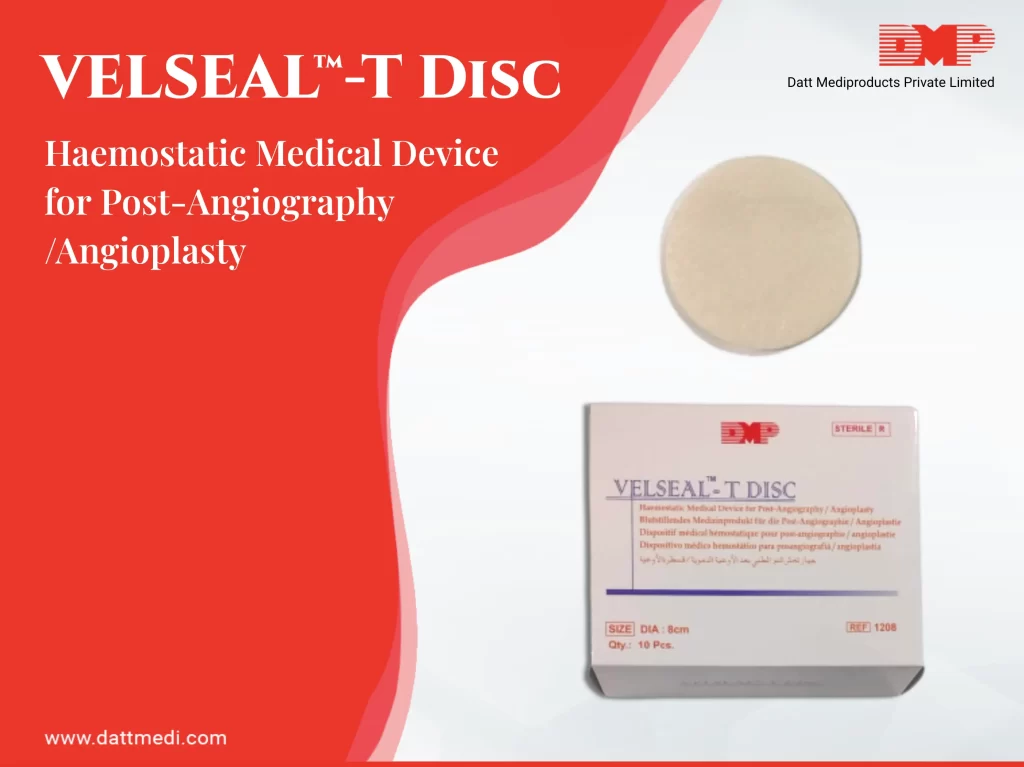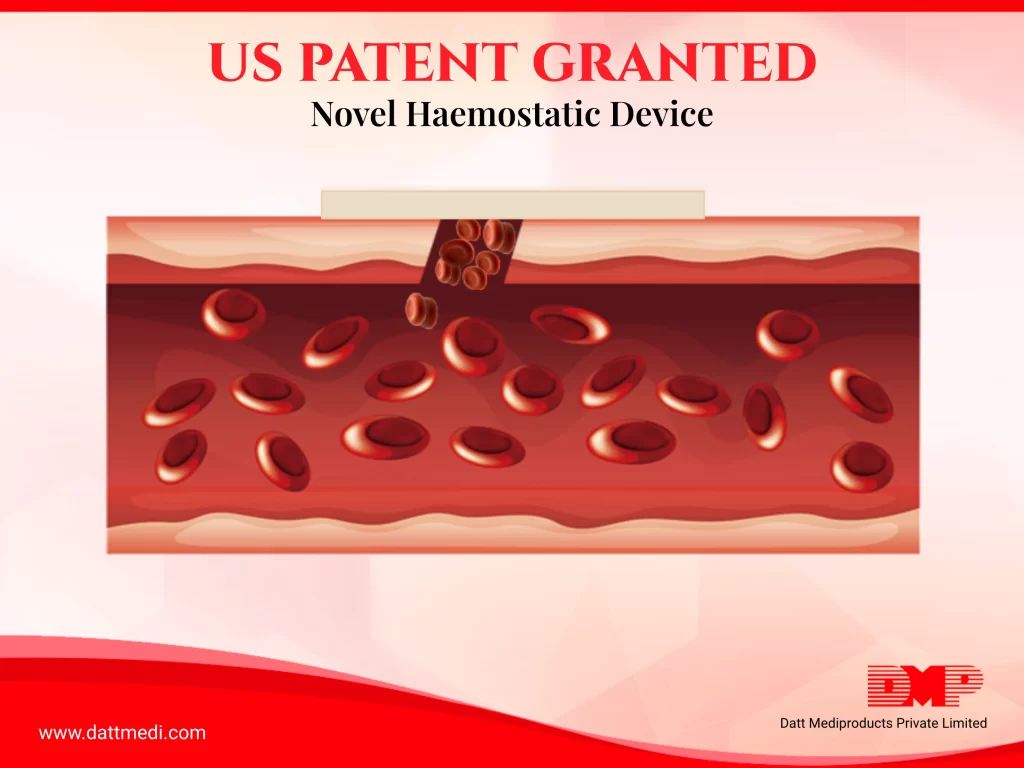
In the realm of wound care, continuous advancements are constantly improving the way we treat and manage various types of wounds. Among the latest innovations, Velseal® -T Disc has emerged as a game-changer. This revolutionary product offers an effective and convenient solution for promoting wound healing and enhancing patient comfort.
Understanding Velseal® -T Disc
It is a cutting-edge wound care product designed to optimize the healing process while minimizing discomfort for patients. Velseal® -T Disc promotes haemostasis by absorbing the blood and accumulates clotting factor within the voids and initiate the clotting by interaction with Thrombin, Calcium chloride and Tranexamic acid.
Key Features and Benefits:
1. Advanced Composition:
It is composed of high-quality materials that offer excellent absorption and retention capacities, reducing the risk of maceration and infection. However, it does not provide moisture balance or directly contribute to wound healing.
2. Easy Application:
Thee disc-shaped design of Velseal® -T Disc allows for simple and hassle-free application. Its non-adherent nature eliminates the need for additional fixation methods, providing a secure and comfortable fit. The dressing is available in various sizes to accommodate different wound types and locations.
3. Enhanced Patient Comfort:
It prioritizes patient comfort by minimizing pain and trauma during dressing changes. The non-adherent surface prevents the dressing from sticking to the wound bed, reducing discomfort and potential damage to healing tissue.
4. Cost-Effective Solution:
It offers a cost-effective wound care solution, as it requires no dressing changes. A single application helps in achieving complete hemostasis, contributing to overall healthcare cost savings. Its durability and prolonged wear time further enhance its cost-effectiveness.
Clinical Efficacy and Evidence
The product has undergone rigorous testing and evaluation to validate its clinical efficacy. Clinical studies have demonstrated its effectiveness in promoting faster wound healing, reducing pain, and minimizing complications such as infection. These studies highlight the dressing’s superior moisture management capabilities and its ability to facilitate granulation tissue formation, resulting in improved patient outcomes.
In the rapidly evolving field of wound care, the Velseal® -T Disc stands out as a remarkable innovation. Its unique composition, easy application, and patient-centric design make it a valuable addition to any healthcare setting. With its demonstrated clinical efficacy and cost-effectiveness, this advanced dressing offers a promising solution for healthcare professionals and patients alike. By leveraging the benefits of Velseal® -T Disc, healthcare providers can enhance wound healing outcomes and improve the overall quality of care for patients with acute or chronic wounds.




